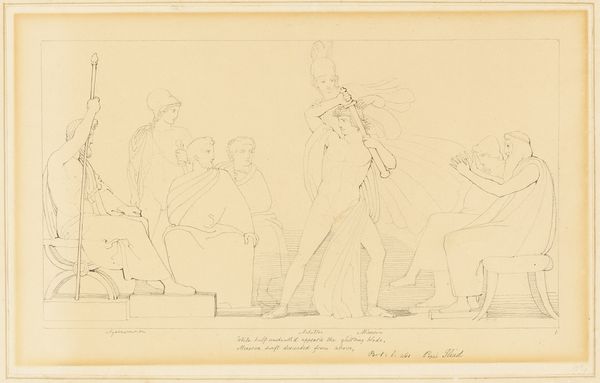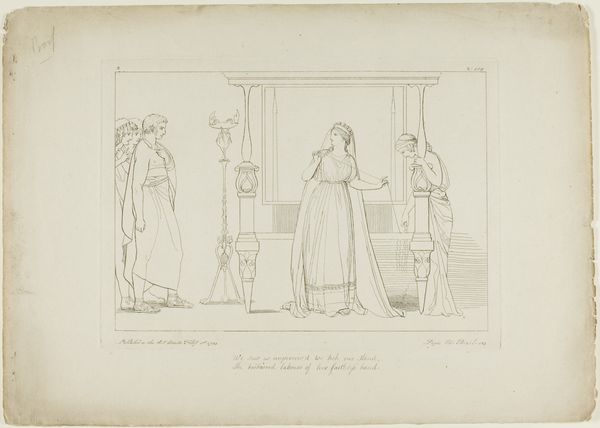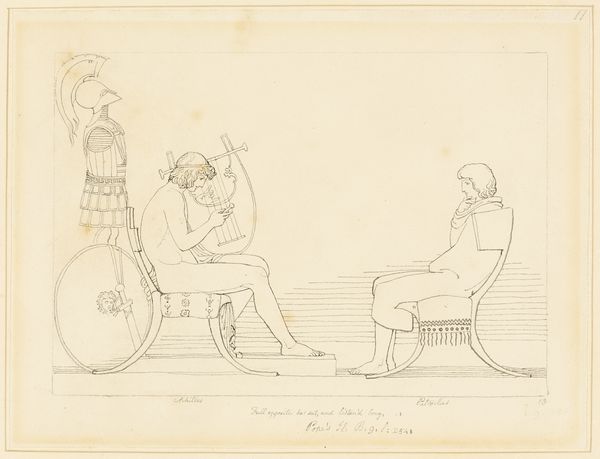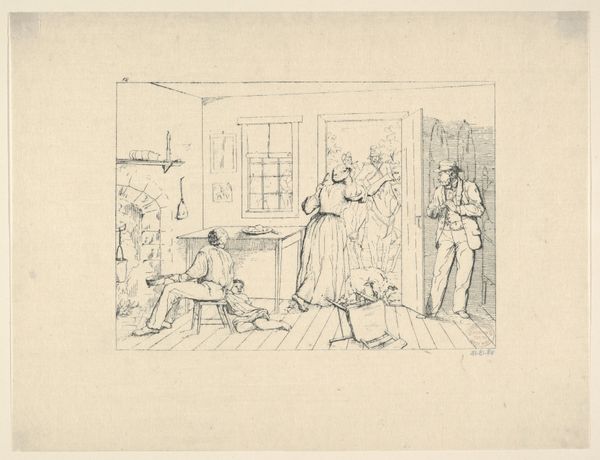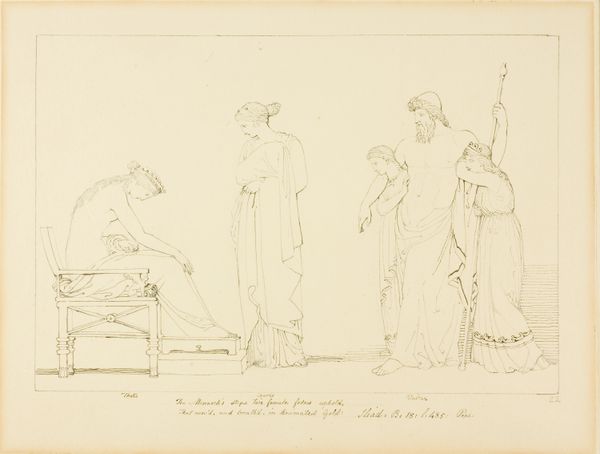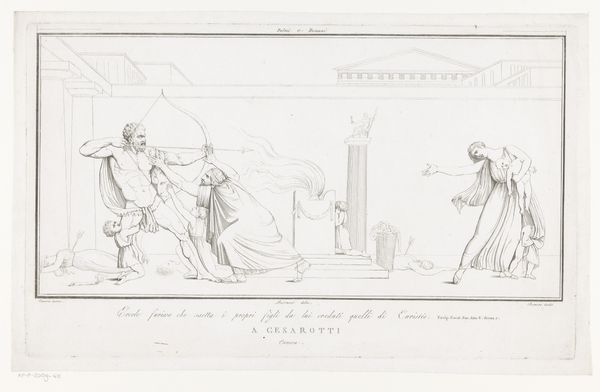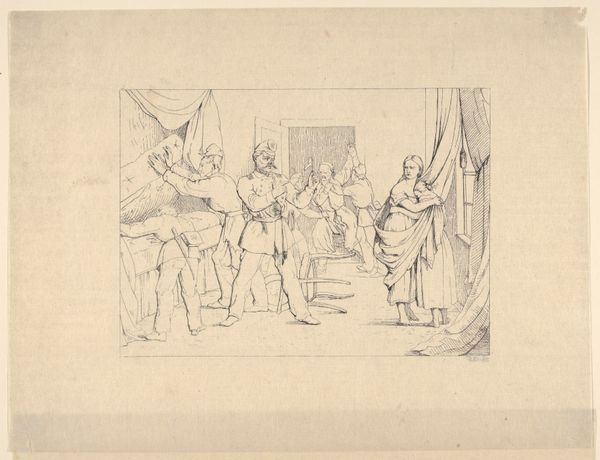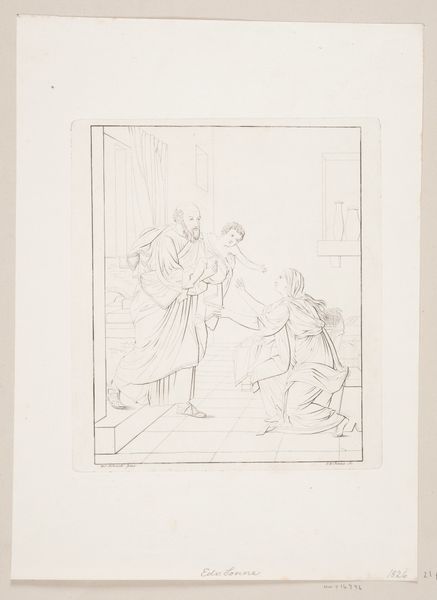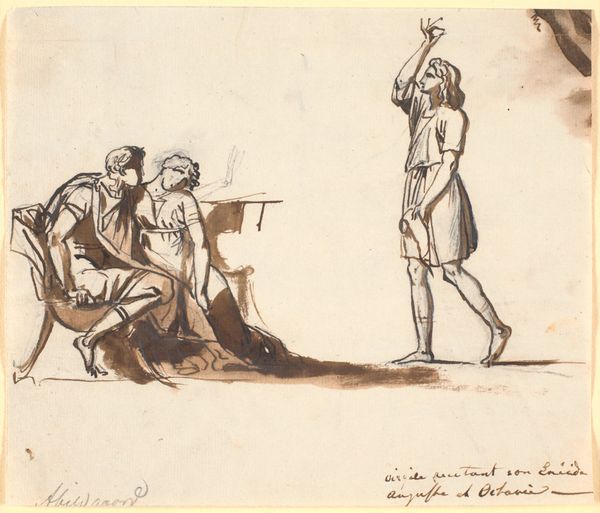
drawing, print, paper, ink, pen
#
drawing
#
neoclacissism
# print
#
greek-and-roman-art
#
landscape
#
figuration
#
paper
#
ink
#
line
#
pen
#
history-painting
#
academic-art
Dimensions: 212 × 326 mm
Copyright: Public Domain
Curator: This pen and ink drawing is called "The Song of Demodocus." It's by John Flaxman. Editor: It strikes me immediately by its delicate linework and sparse composition. It’s almost skeletal in its purity, but also remarkably serene. Curator: Flaxman was a key figure in the Neoclassical movement. He embraced the artistic principles of ancient Greece and Rome. Consider the historical context: in Flaxman’s time, there was a renewed fascination with classical antiquity, fueled by archaeological discoveries and a growing interest in reason and order. Editor: Yes, the piece channels this ethos so strikingly with its clear lines and balanced figures. The medium, just simple ink on paper, further distills the essence of Neoclassical art into the bare minimum components. What is interesting, in this respect, is to read it with structuralist theories, which invite to identify the key signs that enables meaning-making: we find a distinct preference for linearity over painterly qualities. Curator: Flaxman drew inspiration from Homer’s "Odyssey." The bard Demodocus sings at the court of King Alcinous. It evokes themes of homecoming, storytelling, and the power of art to stir emotions. It’s like a snapshot into the societal importance of narrative. Editor: Look at how Flaxman employs the linear style to emphasize the forms, devoid of elaborate shading. The intentionality with line directs our eyes. Consider the composition. There are only a few men with all of the linear energy flowing towards them, which places significance onto their activity. I cannot avoid questioning the narrative impact. Curator: It raises some interesting questions. What role did images play in the transmission of Homeric ideals and stories in Flaxman’s era? How did the public reception of Flaxman's images intersect with larger political and intellectual currents? What can Flaxman's image tell us about shifting tastes and perceptions of heroism? Editor: Reflecting on this piece, I realize how the deceptive simplicity can prompt such complex, multilayered analysis. It provides great emphasis on the formal elements of visuality through these lines. Curator: It truly highlights the endurance of classical themes across different cultural periods. It makes one contemplate the ongoing dialogues between past and present through art.
Comments
No comments
Be the first to comment and join the conversation on the ultimate creative platform.

